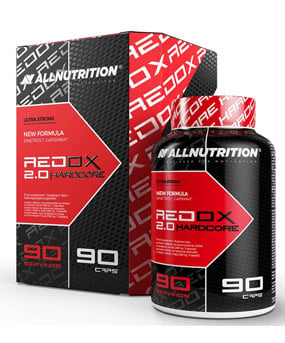Za wiki: http://en.wikipedia.org/wiki/Formestane
Formestane belongs to a class of drugs known as 2 aromatase inhibitors. It is used in the treatment of estrogen-receptor positive breast cancer in post-menopausal women. It is available as an intramuscular depot injection (Lentaron).
Formestane is often used to suppress estrogen production from anabolic steroids or prohormones. It also acts as a prohormone to 4-hydroxytestosterone, an active steroid which displays weak androgenic activity in addition to acting as a mild aromatase inhibitor.
Formestane has poor oral bioavailability and as such is no longer popular as many orally available aromatase inhibitors have been developed.
It is selective.[1]
I dalej, na temat hydroxytestosterone: http://en.wikipedia.org/wiki/4-hydroxytestosterone
4-Hydroxytestosterone (4-OHT or 4,17beta-dihydroxy-4-androstene-3-one) is an anabolic steroid. It was first patented by G.D. Searle & Company in 1955 and is testosterone with a hydroxy group at the four position. 4-OHT has moderate anabolic, mild androgenic, and anti-aromatic properties and is similar to the steroid clostebol.
Oraz na innej stronce: http://www.ironmagazine.com/review30.html
4-Hydroxytestosterone
4-Hydroxytestosterone (4-OHT, 4,17beta-dihydroxy-4-androstene-3-one) is a legal steroidal compound that is relatively new to the market. Unlike prohormones, 4-OHT does not require enzymatic conversion to have an anabolic effect. It was first patented by G.D. Searle & Co. in 1955, but it did not reach the commercial market, and has recently become available as a dietary supplement. Chemically, 4-OHT is testosterone with a hydroxy group at the four position, making it most similar to the steroid clostebol, which has a chloro group at the four position. These two compounds are also very similar in effect.
4-OHT has moderate anabolic, mild androgenic, and anti-estrogenic properties. All in all, it can be expected to be associated with very few side effects, but this also comes at the expense of reduced anabolic activity. In the levator ani assay, 4-OHT is .65 times as anabolic and .25 times as androgenic as testosterone propionate. The reason that this compound has such low androgenic activity is that the modification at the 4 position prevents DHT conversion. In vitro, 4-OHT is actually a weak inhibitor of 5-alpha reductase. This weak androgenic effect is ideal for those who want to avoid or minimize side effects such as baldness, acne, and BPH. 4-OHT also has the benefit of having anti-estrogenic effects, which will eliminate chances of estrogen levels increasing, which can lead to side effects such as extra water retention and gyno. 4-OHT itself is a weak inhibitor of the aromatase enzyme which converts testosterone into estrogen, and a metabolite, 4-hydroxyandrostenedione (formestane), is a potent aromatase inhibitor. It should be emphasized that both androgenic and estrogenic effects can be beneficial for bodybuilders, it is simply a matter of how much side effects one wishes to tolerate.
Like most steroids, 4-OHT has low oral bioavailability and should be taken through a different route. Another reason why oral administration is not ideal is that, like clostebol, 4-OHT has a very short half-life. Those who inject usually use it every day or every other day totalling 300-700 mg weekly, stacked with other substances. Doses for transdermal administration should be in the range of 150-300 mg daily, and this is once again assuming one is stacking it with other steroids or prohormones. Using it as a standalone, optimal doses are probably considerably higher. 4-OHT has been most commonly stacked with 4-AD and 1-testosterone, although there are theoretical reasons why it may be beneficial to stack it with many substances - it will generally reduce estrogenic side effects, while adding anabolism without significantly contributing to androgenic side effects.
W skrócie, dla tych, którym nie chce się czytać.
 Choć Formestane jest inhibitorem aromatazy, jest zarazem prohormonem łagodnego sterydu anabolicznego o nazwie 4-hydroxytestosterone. Steryd ten również wykazuje lekkie działanie antyestrogenowe oraz, co ciekawe, ogranicza 5-alfa reduktazę. Zatem o ile jest sens dodawać Formestane do cyklu opartego na środkach aromatyzujących i podlegających reduktazie (testosteron, metanabol - Formestane obniży zarówno estrogenowe, jak i w niewielkim stopniu androgenne skutki uboczne), o tyle dodawanie go do PCT mija się z celem. Na PCT chcemy być wolni od zewnętrznych androgenów, a do takiego konwertuje niestety ten AI.
Choć Formestane jest inhibitorem aromatazy, jest zarazem prohormonem łagodnego sterydu anabolicznego o nazwie 4-hydroxytestosterone. Steryd ten również wykazuje lekkie działanie antyestrogenowe oraz, co ciekawe, ogranicza 5-alfa reduktazę. Zatem o ile jest sens dodawać Formestane do cyklu opartego na środkach aromatyzujących i podlegających reduktazie (testosteron, metanabol - Formestane obniży zarówno estrogenowe, jak i w niewielkim stopniu androgenne skutki uboczne), o tyle dodawanie go do PCT mija się z celem. Na PCT chcemy być wolni od zewnętrznych androgenów, a do takiego konwertuje niestety ten AI.
Zmieniony przez - mołodi w dniu 2010-04-02 17:20:43
Zmieniony przez - mołodi w dniu 2010-04-02 17:22:05
zdrówka


 Krzysztof Piekarz
Krzysztof Piekarz






